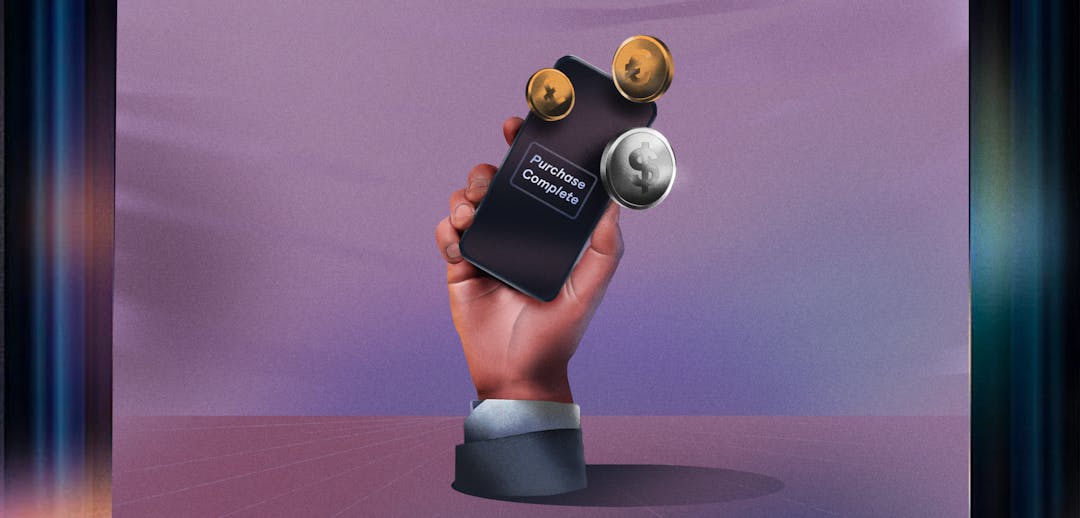Here's everything you need to know about product-led growth, and exactly why PLG businesses are starting to dominate the SaaS landscape.
Welcome to the product-led growth (PLG) age. From flag-bearing pioneers like Slack to mature switchers like HubSpot, product-led businesses are starting to dominate the SaaS landscape.
Why?
- They are worth more: the average PLG company is worth double the public SaaS index.
- They scale faster: 83% of public SaaS companies to achieve $100m ARR in their first five years use product-led models.
- They’re increasingly popular: PLG market capitalization has grown from $21 billion in 2016 to $687 billion in 2020.
On the one hand, the shift from selling to company executives to directly engaging end-users has been driven by macro conditions and consumer behavior, such as falling development costs democratizing software sales. On the other hand, it’s been driven by the simplest reason there is: it makes business sense.
In this guide, we compare product-led growth to other SaaS growth strategies, outline the benefits of product-led models, analyze the approaches to PLG and help you decide whether it’s the right strategy for your business.
What is product-led growth (PLG)?
Product-led growth is a go-to-market strategy that relies on the product for user acquisition, conversion, retention and ultimately expansion.
Whether survey polling (SurveyMonkey) or video calling (Zoom), code scanning (Snyk) or DevOps tooling (Datadog), the SaaS product acts as the solution, salesperson and single source of truth. It tangibly supports end-users’ day-to-day, such as removing annoying tasks and enhancing efficiency. It enables customers to make the initial purchase, renew their subscription and upgrade their package. It delivers everything the consumer needs to know - pricing, contract length, feature FAQs, etc - from within the product.
Usually delivered via an initial freemium or free trial offer, a product-led model removes the friction that customers hate - i.e lengthy sign-ups, demos, onboarding and hidden fees - and doubles down on what customers love: a well-designed, easy-to-use product that enhances personal productivity.
PLG vs other SaaS growth strategies
Product-led growth vs sales-led growth
Sales-led growth (SLG) revolves around a salesperson. They are responsible for bigging up the benefits of the software to a targeted audience to make sales, renewals and upgrades. They wax lyrical about the brilliant features, offer great deals, provide tailored demos, deliver the contracts, and take control of onboarding. In PLG, that’s the role of the product.
Whereas sales-led growth is a ‘push’ tactic using reps to spread the word, product-led growth is a ‘pull’ tactic using the product as a magnet for customers. In an age where three-quarters of B2B buyers prefer to self-educate rather than learn from a rep, PLG is certainly at an advantage even before you consider the considerable friction and costs (like sales teams’ salaries, for example) that SLG adds to the customer acquisition process.
Yet, sales-led growth still has its benefits. If your product is revolutionary or complex, then the self-educating style of PLG doesn’t work as well. If your product is incredibly expensive to build, then freemium / free trial may not be sustainable. If your product is designed for large enterprise buyers, then directly targeting your ICP and selling directly to a handful of decision-makers may be faster and more efficient.
It’s a judgment call, but for most SaaS companies, PLG holds the better hand.
This video, originally created for Paddle Studios, goes into PLG Benchmarks for your company:
Product-led growth vs customer-led growth
With a customer-led growth (CLG) model, all internal decisions are taken with the customer in mind.
How do they actually use the product? How can we maximize the outcomes for them?
CLG therefore relies on extensive customer feedback and qualitative research to determine product development. It’s not about reactive one-size-fits-all customer service, but proactively finding out what individual customers want and what product outcomes to deliver.
Using this information, the whole company - from customer success and marketing to engineering and sales - then aims to deliver value at each customer touch point, be it discovery, sign-up or expansion. As each part of the business is driven by customers’ preferences, it’s easier to acquire customers and simpler to onboard, while also generating positive word-of-mouth advocacy. ProfitWell even found that SaaS companies investing in customer research grew 2-3x times faster.
However, CLG is not cheap. Where PLG has minimal upfront costs, CLG requires a large sales team and is therefore usually adopted by mature PLG companies with large reserves. For example, Twilio increased its sales team from 12 to 800 after its IPO and kickstarted a more customer-centric approach.
In short, CLG blends the best of PLG and SLG, but at a cost.
Five benefits of PLG for SaaS businesses
It’s been hailed as the ‘modern GTM’ and the ‘future of growth,’ but why are so many SaaS companies betting on product-led growth?
Well, most SaaS companies dream of a huge IPO and guess what? In 2019 all of the top SaaS IPOs were PLG businesses. On average, PLG companies at IPO have higher revenue growth, gross margin, net dollar retention and implied ARR than non-PLG companies. On top of that, Openview research showed that PLG companies tend to perform better post-IPO too.
But, to get themselves in the position to launch an IPO in the first place, SaaS companies need to perform well and that’s where the benefits of a PLG strategy really kick in.
1. Shorter sales cycles
The PLG approach consigns the traditional slow-moving sales model to the rubbish heap. No more stakeholder lists. No more targeted approaches. No more demos and onboarding. As such, PLG speeds up the sales cycle in three main ways:
- Wider top-of-funnel: PLG removes the barriers to entry for your product. Instead of offering demos to select decision-makers, freemium or free trial options allow more end-users to sample the software and appreciate its value.
- Self-onboarding: With PLG, customers learn how to use the product from the product. Meanwhile, a simple sign-up and onboarding process reduces the time-to-value, speeding up the time taken for users to upgrade and convert into a paying customer.
- Rapid scaling: Traditionally, global expansion required hiring and training sales reps in every region. With PLG, it’s simply a case of regionalizing the onboarding process - with different languages and currencies, for example - then you’re good to go.
2. Lower customer acquisition costs
“Many SaaS businesses strive for $0 customer acquisition cost (CAC) and yet most still end up spending a small fortune acquiring each new customer. If you want to get to $0 CAC, product-led growth is the only way you're going to make it happen”.
MixMax CEO Olof Mathé is certainly convinced. Why? Well, focusing on the product cuts overhead costs elsewhere. Instead of ploughing funds into your marketing or sales team, you’re establishing the product as the main customer magnet. That involves engineering spend, but considerably less on sales team salaries, for example. (Remember, Twilio only had 12 sales persons at the time of its $1.2 billion IPO).
You can also do more with a less numerous and more diversified team. For instance, if you take budget away from hiring SDRs, you could invest in roles aimed at boosting customer experience.
3. Higher revenue per employee (RPE)
With PLG, the product is doing the legwork. It distributes itself (think the viral nature of receiving a Zoom invitation), gives users the keys to try the product (freemium or free trial), enables customers to upgrade when they want (self-onboarding) and then distributes itself again (positive word-of-mouth). It almost makes human intervention redundant. Almost.
In fact, with the product doing the heavy-lifting, each employee can focus on specific roles that help drive company growth. Be it a customer success executive proactively gathering consumer insights for a more customer-centric approach, or a marketing rep analyzing the data to focus efforts in areas of high interest. In short, it makes employees and departments more efficient, boosting a company’s revenue-per-employee (RPE). That means smaller teams and higher margins. Just look at Ahrefs, who achieved $40 million ARR with under 50 employees ($800k RPE).
4. Better user experience
To adopt a PLG model, SaaS companies have to focus on user experience. Their product must solve end-users’ pain points and make a tangible difference to their day. Their product must be easy-to-understand and enjoyable-to-use. Their product must deliver meaningful value in the short-term and long-term.
According to Kyle Poyar, “allowing customers to ‘try before they buy’ is the new norm” and this suits companies with a stand-out user experience. As the product is so focused on delivering value in a product-led strategy, customers are not only more likely to renew, but also more likely to have positive feedback, which is just as well given PLG is largely based on word of mouth sales. What’s more, a great user experience encourages free-to-paid conversion (they know what service to expect) and makes the time-to-value (TTV) journey smoother.
5. Enhanced analytics
The more smart data = the more smart decisions. From customer KPIs to business metrics, data enables SaaS leaders to better manage their trajectory and a product-centric model is a data machine. For example:
- Customer upsells: By analyzing how individual users use your product, you can track their engagement and target them with upsells they’ll find useful. You’re effectively building a base of product-qualified leads - customers you know already like the product who’d be more likely to try additional services.
- Customer enhancements: No customer success department can ever match the feedback you receive from tracking customer engagement with your product. You can then take these learnings to enhance the product in relation to customers’ preferences, boosting customer experience and retention.
In effect, in-product analytics helps you validate new innovations and optimize your business processes.
Implementing product-led growth
Implementing an effective product-led growth strategy is not easy. There is no set PLG template and you can’t simply ask for a copy of another company’s rubrik. However, there are three PLG pillars that all companies should embrace, as well as three tactics to accelerate the PLG process.
Three pillars of PLG
1) Design with end-user in mind
Building a product that customers want is easier said than done. First, you need to understand why a customer might want to use your product.
What tasks do they need to complete? How are they being held back? What could help them?
Second, you need to package that problem-solving function into an accessible product.
Is it easy to self-onboard and enjoyable to use? Can you get instant value without needing support? Does it make their life simpler?
Third, you need to make the product a source of status.
How does your product improve perceptions of the user? How does it make them feel? Why should they tell their friends?
2) Deliver value before capturing value
Unlike in SLG, when you can big up the brilliance of your product pre-purchase, PLG users need to feel the value of your product before they need to pay for it. This is crucial to the uptake of paid-for subscriptions and underpins the whole ‘try before you buy’ concept.
To ensure this ‘aha moment’ (the point where customers realize the value of the product) happens before the paywall, you first need to figure out what the ‘aha moment’ is. For example, it could be the results and subsequent analytics of your first survey with SurveyMonkey. Next, it’s about communication. You need to let the customer know that they’re experiencing something fantastic. Take a look at SurveyMonkey; they update you every time you receive a new response. And how about Grammarly? They let you know how productive you’ve been and fill you in on the kind of mistakes you’ve been making.
3) Invest in the product with GTM intent
This might sound obvious, but there’s no point pursuing a PLG model if you’re only going to back your product half way. Companies need to divert resources into product engineering and development to make usage as frictionless as possible. They need to ensure all departments are focused on the product to make it ready for launch and prepped for scale.
Of course, you can make tweaks along the way, but going too early with a product that bugs, lacks the right customer support or is too complex to use without human intervention will set you back massively. Remember, PLG relies on word of mouth, so if users are having a negative experience then the word on the grapevine won’t be so sweet.
Three PLG accelerators
1) Spread the word
Virality is a common theme among PLG companies and SaaS companies should hone its power to scale quicker. This could come from the product itself - Zoom is naturally viral as it enables one user to invite up to 100 prospective users every use - or from added features - Dropbox shares links when sharing files, introducing new people to the tool. It could also come from good old-fashioned customer service. As Stewart Butterfield, CEO of Slack, says: “every customer interaction is a marketing opportunity, if you go above and beyond on the customer service side, people are much more likely to recommend you”.
2) Go freemium
Is it better to grant full access to your product for a period of time or give limited access for an unlimited amount of time? According to OpenView research, freemium tools lead to 33% more free accounts being set-up, but also lead to a lower activation rate for a paid account than a free trial, which creates a sense of urgency (that familiar ‘time’s running out’ message). Free-to-paid conversion rates for free trial products are also double freemium products (approximately 14% versus 7%). However, analysis by Wes Bush, founder of Product-Led, shows that freemium is more efficient in terms of costs and personnel hours, converting customers 25% more often than free trials when sales were not included.
3) Help customers help themselves
The less friction, the more uptake. The more uptake, the quicker the growth.
Although you may have already minimized friction by removing the cumbersome salesperson-demo-trial process, there are ways to make self-service even more efficient. For example, do you still ask for anything more than a name and email address to sign-up for a free account? Have you developed simple tutorials and guides for using the product?
Removing friction starts with putting yourself in the customer’s shoes. Are there elements that could be made easier at every possible touch point - from sign-up to usage to upgrade? Remember: getting rid of the barriers, opens the floodgates.
Three PLG examples
From B2B (Twilio and Calendly) to B2C (Netflix and Dropbox), security software (Splunk and Axonius) to Development Tools (Atlassian and Okta), there’s no shortage of PLG success stories out there.
1) The pioneer
Zoom was one of the first adopters of PLG and didn’t even have a marketing team in its first two years of existence. Instead, it built a video-calling product with in-built virality (its inherent function is to connect others) and offered it as a pitch-perfect freemium product. “We make our freemium product work so well,” said Zoom CEO Eric Yuan in 2017. “We give most of our features for free and one to one is no limitation. That’s why almost every day there are so many users coming to our website, free users. If they like our product, very soon they are going to pay for the subscription.” He was right: Zoom now has $4 billion ARR.
2) The pivoter
It takes a brave company to dismantle a winning strategy, but that’s exactly what HubSpot did. According to Kieran Flanagan, HubSpot’s VP of Marketing, the company disrupted itself to stay relevant over the long term. “At the time, HubSpot was still growing 30%-40% per year on the shoulders of our original marketing and sales driven inbound marketing model. Despite the success, we consciously chose to upend what had been working by launching our first freemium products”. Having initially operated a small PLG ‘start-up’ within HubSpot to test a freemium offering, HubSpot eventually shifted its whole GTM infrastructure towards a PLG strategy. Now 60% of HubSpot customers start off with a free trial or free product.
3) The pathfinder
PLG isn’t just for household names. In late 2018, European AI company Kaleido launched remove.bg, a product that automatically removes backgrounds from images. Initially released for free, the drag-and-drop product was an instant hit, attracting millions of global users. Kaleido then partnered with Paddle to help monetize the product, take global payments, and navigate worldwide SaaS sales tax rules. The result? Kaleido scaled from zero to 43,000 paying customers across 181 countries within 18 months of launch. With this kind of product-led growth, it was no surprise to see the digital design platform Canva splash out on Kaleido in early 2021.
Is PLG right for your business?
According to Blake Bartlett, Partner at OpenView, “product-led growth will soon become the norm, making it table stakes for SaaS companies that want to win in their markets.” Meanwhile, Jackson Noel, CEO of Appcues, warns: “product is now the single biggest lever for growth - if you're not already moving in this direction, watch out".
But, shifting to PLG is not like picking a new brand of cereal off the shelves. It’s an all- consuming philosophy and you want to make sure it’s right for your business. For example, if your product is expensive to build, highly complex and predominantly sold to large enterprise companies with strict procurement policies then an initially free, self-onboarding bottom-up approach is unlikely to be a great fit. However, if you have an excellent product that can quickly deliver value to the end-user without the need to talk to a sales rep, then it might be time to pivot. Luckily, you’re not alone.
In Kyle Poyar’s compelling blog, he cites over 25 examples of SaaS pivots to PLG from small, mid and large-sized companies across various applications. For instance, Stack Overflow signed up 10,000+ teams in its first month as a PLG company (compared to 1,500 teams in the whole of 2020 under its previous model) and secured a $85million Series E.
How you switch to PLG will depend on your product, ICP, business model, market conditions, organizational structure, financing and long-term plans, to name just a few. However, there are two key things to consider:
1) Get universal buy-in: PLG upends every part of the business and therefore a successful shift needs everyone from boardroom to sales to believe in the change. It can’t just be a top-down decision so take the time to explain the long-term benefits, processes and role changes to all departments.
2) Create space for PLG to grow: A PLG shift doesn’t happen overnight. Companies that have successfully pivoted started small - i.e. HubSpot’s PLG ‘start-up’ within the company - and gradually grew out. If you try wholesale changes, the shift can fail before you even get started.
The product-led growth train is well and truly on the move, and now's the time for SaaS businesses to seriously consider whether to get on board. 🚂




